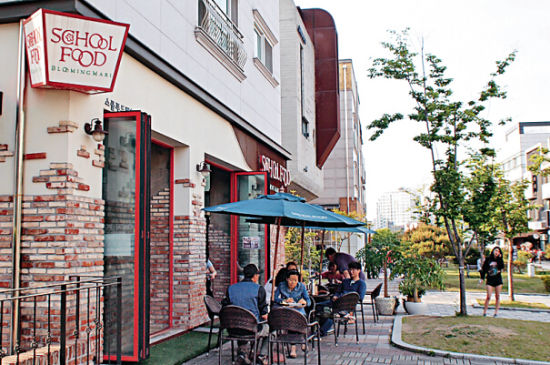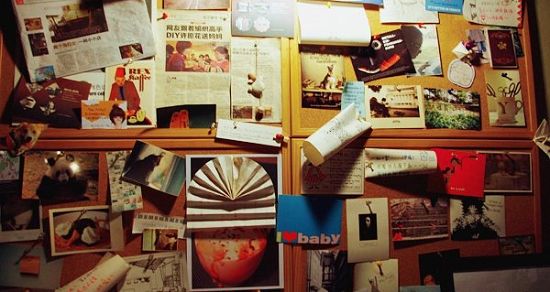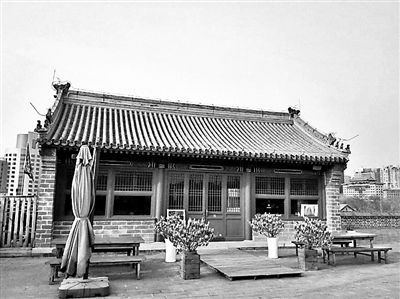Coffee is South Korea's "national drink". Koreans love American coffee.
"studying abroad" magazine reports that South Koreans' obsession with coffee is unimaginable to outsiders. Coffee shop is not only a place to sell coffee, but also a good place to study and work, but also a place to make friends and build contacts. For foreign students, a coffee shop is a multi-functional lounge and library.
In the streets of South Korea, you can see a coffee shop with a strong fragrance every few steps. At almost any time, people of all ages order a cup of coffee, pack it up and take it away, or sit down and enjoy it. I have carefully observed every customer who patronizes the coffee shop. There are students who study hard here, and busy white-collar workers work here. On weekends, the cafe is even more full, and three or five friends order a cup of coffee. Chat for hours. In addition, there are coffee vending machines in large and small companies, schools, subway stations and other public places. Coffee deserves to be the "national drink" of South Korea.

There are more than 20 cafes around Pak Xian Dong Cafe Street in Seoul, South Korea. This used to be the location of the South Korean TV series "you from the Stars".
Coffee has only been introduced into South Korea for a little more than 100 years, which is shorter than that of the United States. But coffee has melted into the bones of Koreans and has become a microcosm of their way of life.
The predecessor of the coffee shop was the tea shed.
At first, Korean cafes were not called such a foreign name, but called "teahouse". When I was working in a Korean cafe, an elderly uncle ran into the shop and ordered a cup of teahouse coffee. I was confused at that time, and the uncle who ordered the order could not tell himself, but insisted on asking for coffee in the teahouse. For me, who didn't understand Korean coffee culture at that time, I really didn't know what to do. Fortunately, a colleague came to the rescue and taught me to add a certain proportion of milk and sugar to the black coffee.
So what is teahouse coffee? It starts with the first person to bring coffee to Korea. According to historical records, the first intersection of South Korea and coffee took place in the Korean era at the end of the 19th century. At that time, North Korea experienced an unrest, and Gaozong hid in the German residence in South Korea in order to avoid Japanese bullying. From then on, Emperor Gaozong's love of coffee got out of hand. A Korean film Coffee was released in 2012, which is roughly the period of history.
It was because of this that the Germans who served Gaozong to drink coffee built the first teahouse in Korean history on the land given to him by Gaozong, selling all kinds of drinks based on coffee. similar to Chinese teahouses. In the following decades, South Korean tea sheds prevailed in Myeongdong, Zhongwu Road and other areas. At that time, the tea shed was not a popular place, but a minority place for high-level bureaucrats or intellectuals to gather after dinner, because the high price of coffee in the tea shed deterred ordinary people.
Modern Koreans love American coffee best.
Now the highest-selling coffee drink in South Korea is American coffee (Americano). What I hear most every day is "Please give me a cup of coffee!" Strong curiosity, I have repeatedly asked some acquaintances why they like beautiful coffee, some people just blindly like it, and some because it has almost zero calories and won't get fat. Indeed, the calorie meter on the drink list shockingly lists the high calories of all kinds of fancy coffee. Only beautiful coffee is superior to others with low-calorie skills, and South Koreans who love beauty also unanimously choose good-tasting coffee without gaining weight.
American coffee is freshly ground coffee, which can only be drunk in a chain coffee shop. The first global coffee chain in South Korea was the Starbucks Lida No.1 store in Xincun, which opened in 1999. Since then, the word "tea shed" began to fade out of sight and replaced by foreign-style "cafes". In just a decade or so, South Korean coffee shop chains have sprung up like bamboo shoots after a spring rain. Nowadays, in the streets of South Korea, a chain coffee shop enters the line of sight almost every few steps.
Won't so many coffee shops close down because of the pressure of competition? Koreans' obsession with coffee is unimaginable to us outsiders. Coffee shop is not only a place to sell coffee, but also a good place to study and work, but also a place to make friends and make connections.
The coffee shop is a multi-purpose lounge.
Koreans like to study in cafes. You can study at home, at school, or even in the school library, so why spend at least one cup of coffee to go to the cafe? First of all, the dormitory of Korean colleges and universities is very limited, and not every student can live in the dormitory as desired. As a result, many people [Weibo] will drive to school early in the morning for dozens of minutes or even hours. If there are no classes for a few hours in between, they will have to find a place to pass the time. As for libraries, I believe that friends in China have also heard and seen or personally experienced the "occupancy of seats" in local libraries. Korean libraries also have limited seats and it is impossible to accommodate so many students at the same time.
Another important reason is that Korean colleges and universities have a lot of discussion and published group assignments, which need several people to discuss and publish a topic together. However, the school library is not allowed to gather for discussion. As a result, cafes with free Wi-Fi, a good environment and the ability to speak freely are naturally a good place to go.
Koreans like to work in cafes. Unlike Chinese wine table culture, Koreans often work and do business on the coffee table. Koreans like to walk into cafes for the purpose of work. Working in a Korean company is stressful, and you don't want to stay in a repressed office during non-working hours, preferring to choose a coffee shop with a relaxed atmosphere.
Koreans like to hold a cup of coffee to chat and make friends. While tasting mellow coffee, I accidentally found that like-minded friends hit it off, and the trickle of friendship has been flowing ever since. When I was working in a coffee shop, I always looked at different people and things, but there were always a few familiar faces that appeared in my sight all day. Every few cycles, I see several people start the process from acquaintance to acquaintance because they get to know each other over coffee in the same place.
Coffee is also a Korean decoration.
Even if they don't like coffee, Koreans love everything related to it. Do you remember the SNS sent by the heroine in you from the Star? "A sweet mocha is the best on a tired afternoon." After the hostess sent the picture, she gave the coffee to her assistant. What she wanted to convey was not necessarily her love of coffee, but her leisurely life.
In the streets of South Korea, coffee in hand, like earrings and belts, has become an ornament, a symbol of young people in their 20s and 30s, a symbol of youth and a leisurely life of petty bourgeoisie; in Korean university classrooms, coffee cups with various colors of logo are placed on desks, becoming a boring classroom scene. This is another kind of freshly ground coffee-take away coffee. There are stores that only sell take away coffee, which do not have seats, and the price is usually much cheaper than that of a chain coffee shop. It's more expensive to sit down and drink coffee than to pack it away, isn't it a bit like the European tablecloth fee? Of course, there is also a coffee chain coffee take away. At this time, drink not only the dark brown liquid in the cup, but also the logo on the cup.
From the initial minority culture to today's "national beverage", although the history of Korean coffee is very short, it is undeniable that it condenses every bit of Korean life and forms a unique "coffee culture" in South Korea.
Important Notice :
前街咖啡 FrontStreet Coffee has moved to new addredd:
FrontStreet Coffee Address: 315,Donghua East Road,GuangZhou
Tel:020 38364473
- Prev

Beijing "Futures Coffee" crowdfunding is quietly on the rise.
Among the many crowdfunding startups, nothing is more popular than the crowdfunding cafe. We are in the era before change, this is the best of times, but also the worst of times. If we can stick together, we will be invincible. This is also the attitude of qu Xiaoning, one of the sponsors of the Futures Coffee crowdfunding project, which is the first excellent futures investment incubation in the domestic futures market based on crowdfunding model.
- Next

The construction of a cafe at the site of the Ming city wall raises questions and responds: houses are not cultural relics.
Recently, Mr. Li, a citizen, reflected that a cafe had been built on the city wall of the Ming City Wall ruins Park, which was located in a corner house on the city wall. In this regard, Mr. Li questioned whether it is appropriate to use ancient buildings to set up cafes for for-profit activities and whether they will cause damage to cultural relics. In response to this matter, the staff of the park office of the Ming city wall ruins informed
Related
- Why does hot American coffee taste bitter? Difference in proportional concentration between hot American and ice American
- Is espresso stored overnight in the refrigerator harmful to your body? Is frozen coffee better than freshly ground coffee?
- What parameters and proportions of water temperature should be used to grind and brew fresh coffee beans? Why can't I drink freshly roasted coffee right away?
- Customers have "changed" Manner's new products! Shop assistant: Please don't mess around!
- Remove sockets in customer areas at Starbucks stores?! Netizen: I won't go if I really tear it down
- What is the difference between the taste steps of sun-dried coffee and washed coffee? Why is sun-cured coffee sweeter and washed coffee sour?
- The recipe for salty grapefruit dirty is revealed! Coffee Festival salty grapefruit dirty coffee making materials parameters ratio milk share!
- How about the flavor of Sunlight 74158 at Sidamo Banshaha Mathieu Processing Factory in Ethiopia? 74158 Share the proportion of coffee brewing parameters!
- What effect does Italian American coffee with filter paper have? Will coffee taste better if it is put on filter paper at the bottom of the powder bowl?
- What is the color difference in coffee beans? What are the characteristics of honey processed coffee beans? Why are the anaerobically treated coffee beans uneven in color?

